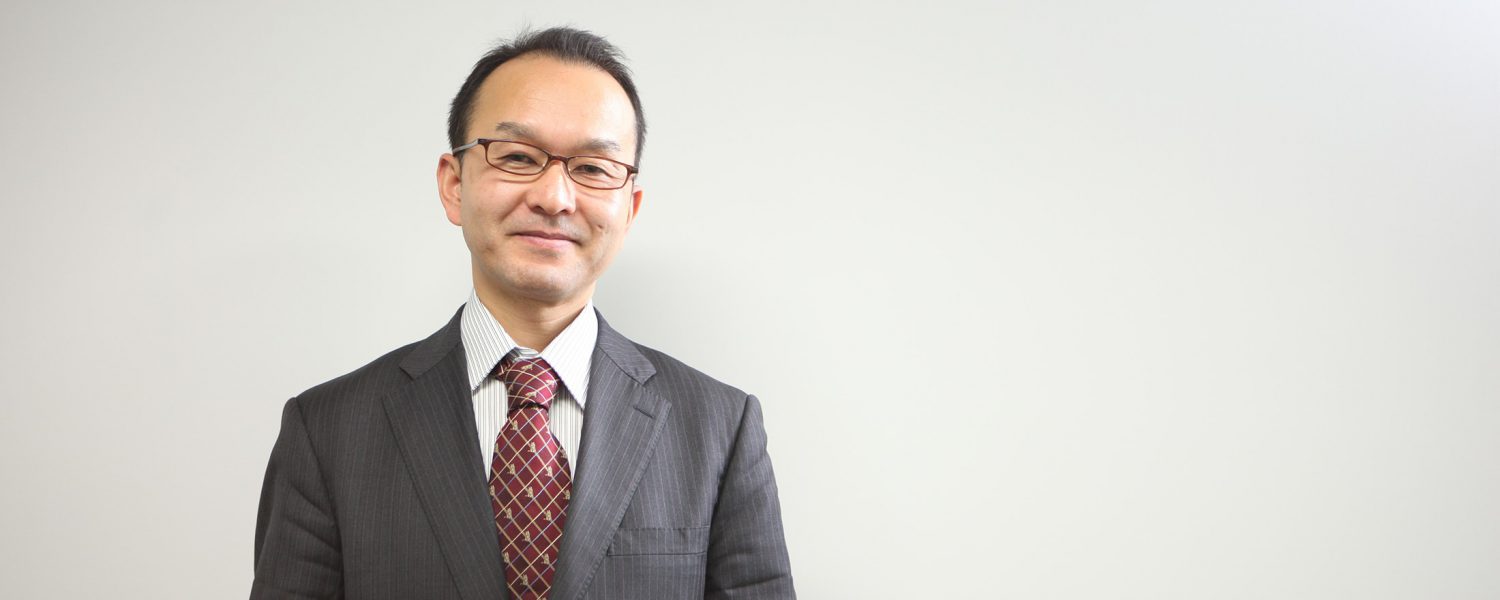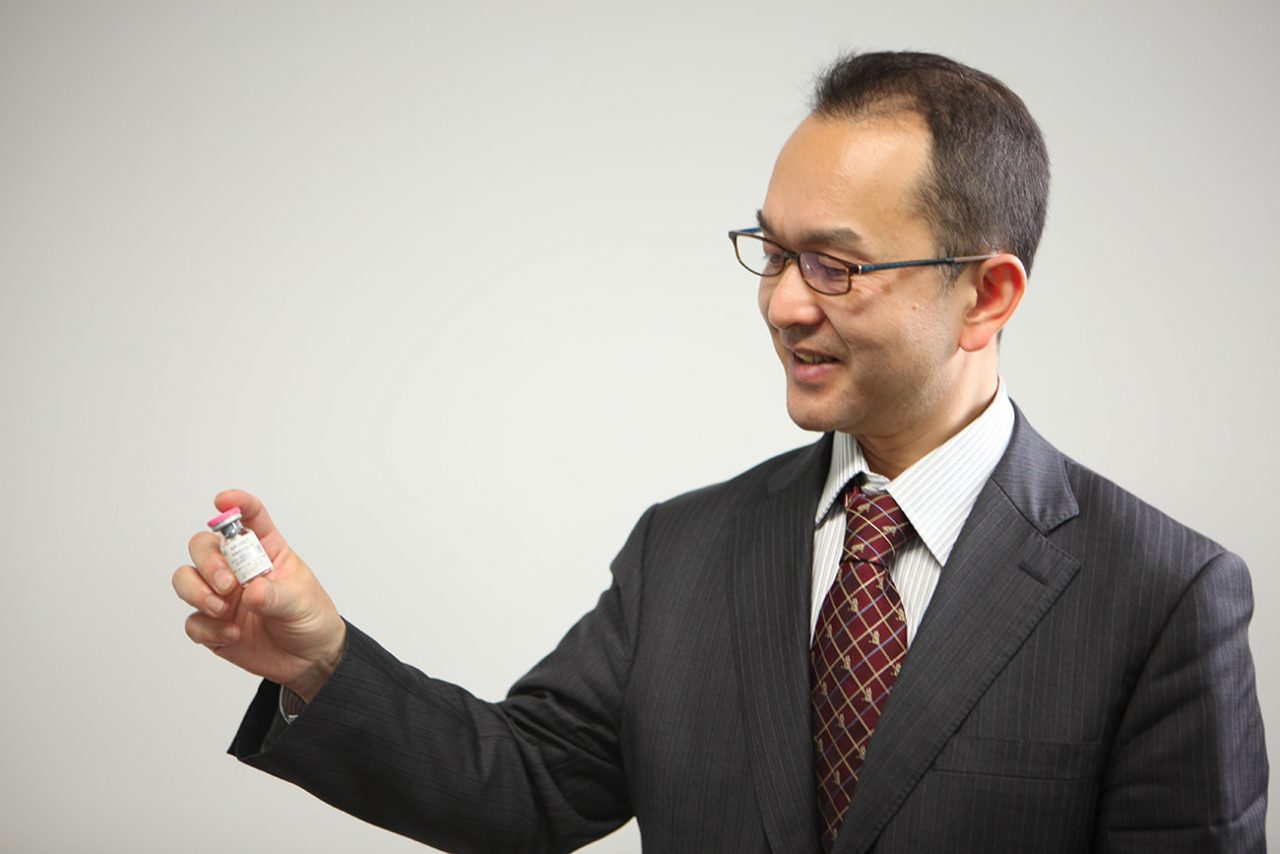
世界唯一の創薬技術で描く未来への希望
人間の体には、自ら傷を修復する力があるーー。
日本で発見されたHGF(肝細胞増殖因子)の可能性に注目し、不治の病に挑む創薬ベンチャー。
慶應義塾大学や最先端のロボット治療とも連携し、かつてない“希望の薬”の実現に向けて奔走するその軌跡と展望を追った。
“不治の病”に立ち向かう創薬バイオベンチャー
弊社は、大阪大学発の創薬バイオベンチャーとして2001年に大阪で設立されました。以来、主にHGF(肝細胞増殖因子)を使った医薬品を実用化し、世界中の難病患者を救うべく研究開発を続けています。
HGFとは我々の体の中にあるタンパク質で、元々は肝臓の細胞を増殖させる因子として、約30年前に中村敏一先生(大阪大学名誉教授)らによって発見されました。肝臓は、人間の体で最も再生能力が高い臓器として知られており、生体肝移植の手術を例に挙げるなら、提供者の肝臓を1/3ほど切除した場合も、その部分はやがて再生します。研究を進めるうちに、このタンパク質が肝臓だけでなく、さまざまな臓器や組織の再生・修復に関わり、神経系にも非常に強力に作用することがわかってきたのです。そこで私たちは、脊髄損傷とALS(筋萎縮性側索硬化症)という二つの神経難病を主なターゲットとして、まだ確立されていない根本的な治療薬の開発に取り組んでいます。
ちなみに「クリングルファーマ」の「クリングル」とは、HGFの分子内に見られるタンパク質の構造のこと。HGFやその関連物質の医薬品開発を手がける会社として、その特徴であるクリングル構造と、医薬品を意味するファーマシューティカルという二つの言葉を合わせて命名しました。
産学連携体制でプロジェクトを進めていく中で、脊髄損傷に関しては慶應義塾大学医学部の中村雅也教授、ALSは東北大学医学部の青木正志教授、再生医療分野からは慶應義塾大学医学部の岡野栄之教授と共同で、私たちが臨床開発を担当し、事業化を目指しています。事故などで中枢神経が損傷を受け、四肢や体を動かすことができなくなる脊髄損傷に対し、ALSは筋肉の運動を司る神経細胞が侵されていく原因不明の病気です。どちらも根本的な治療薬が存在せず、患者さんの体が動かなくなることで、介護する方の負担が非常に大きいなど、多大な医療経済効果を持つ疾患ですが、HGFには神経細胞の生存を促し、神経突起を伸ばしていく作用があり、飛躍的な効果が期待されています。

長き道のりを支えるパートナーとの出会い
例えば、慶應義塾大学で行われた実験では、重度の脊髄損傷のために歩くことも、手で何かをつかむこともできなかったサルにHGFを投与したところ、約3週間で手足の機能に目覚ましい回復が認められました。これは脊髄損傷治療薬の開発において、まさにターニングポイントといえる成果です。
しかし、それが医薬品として承認されるには、非常に長い道のりが必要です。医薬品の開発は一般的にさまざまな動物を使った非臨床試験に加えて、3段階の臨床試験(フェーズ1、2、3)をクリアしなければなりません。脊髄損傷に関しては、安全性を確認するフェーズ1と、少数の患者さんを対象に効果を確認するフェーズ2を合わせたフェーズ1/2臨床試験を国内で実施しています。一方、ALSはフェーズ2の段階です。ここで結果を出せなければ患者数を増やして効果を検証するフェーズ3へと進むことができないという点でも、医薬品開発でいちばん重要なポイントに臨んでいるといえるでしょう。
一方で、日本の創薬系ベンチャーを取り巻く状況は、非常に厳しいと言わざるを得ません。非臨床試験にはじまり、治験薬の製造、臨床試験など、それぞれの段階で億単位のコストと何年もの期間が必要になりますが、その間は収益を得ることができないため、開発を続けられるかどうかは外部からの資金調達にかかってきます。プロジェクトの目的やビジョンに共感し、未来の可能性に投資していただける方が見つからなければ、これまでの努力はおろか、患者さんたちの希望も水の泡と消えてしまうのです。
こうしたギリギリの状況の中で今回、手を挙げてくれたのがKIIでした。私たちが持つ、HGFを組換えタンパク質として製造できる世界で唯一の技術はもちろんのこと、慶應義塾大学の先生方と共同でプロジェクトを進めてきた実績と、慶應義塾大学の研究成果でイノベーションを導いていく可能性を評価していただいた結果だと感じています。まさに、私たちのプロジェクトの恩人と呼べる存在ですね。
世界唯一の技術を手に、創薬の未来を切り拓く
じつは、私自身はアメリカのバイオベンチャーで3年半ほど研究に携わるなど、もともとは微生物の研究者だったのですが、さまざまな体験をする中で、病気で苦しんでいる方の役に立つ医薬品の開発に携わりたいという想いを抱いて帰国しました。日本で画期的な薬を開発し、世界に貢献していくプロジェクトに携わりたいと考えていたところにこの会社と出会い、2004年に入社。研究開発部長や取締役事業開発部長を経て、2016年12月に現会長の岩谷邦夫を継ぐかたちで社長に就任しました。入社から十年以上になりますが、世の中のためになることに力を捧げたいという想いが、私のモチベーションになっています。
現在の展望ですが、HGFの組換えタンパク質の医薬品開発において、我々が世界をリードしていることは間違いありません。HGFは遺伝子組換え技術により組換えタンパク質として製造されますが、それを人間に投与するためには、非常に厳しい基準をクリアする必要があります。この“医薬品グレード”で「遺伝子組換えヒトHGF」を大量製造できるプロセスをいかにして確立するか、そこが最も難しいところでもあるのですが、それを世界で唯一確立し、安定的に製造できているのが私たちの技術なのです。
また、人間が装着するサイボーグ型ロボットスーツ「HAL®」で世界的な注目を集めるサイバーダイン社もHGFの可能性に注目し、弊社に資本参画しています。再生医療に携わる慶應義塾の先生からサイバーダインの社長で筑波大学の山海嘉之教授をご紹介いただき、複合的な脊髄損傷のトータルケア、すなわちHGFで脊髄損傷患者の病態を和らげながら、細胞治療で神経細胞を増やしていき、同時に医療用HAL®による神経機能再生を通じて身体機能を向上していくこと、それが未来のあるべき医療だというビジョンを両者で共有しています。
将来的には、さまざまな病気へHGFの適応範囲を拡大しながら、大学のような研究機関と製薬企業の間を取り持ち、新しいバイオ医薬品のシーズを拡充していくことも考えています。HGFによる医薬品を実現し、いまだ治療方法のない「アンメット医療ニーズ」を得意分野とする製薬企業へと成長していくことで、世界中の患者さんとそのご家族のために貢献していきたい。それが、私たちの目標であり、願いでもあります。